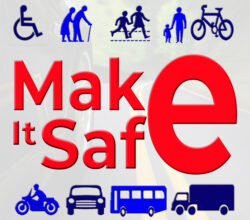Advice and guidance for motorcyclists
Road safety advice and guidance for motorcyclists, from safe motorcycling practices and safety gear to motorcycle maintenance and medical fitness to ride.
Whether you are an experienced rider or new to motorcycling, understanding and implementing safety measures is crucial for a secure and enjoyable riding experience.
Why Safer Motorcycling Matters:
Safer motorcycling is essential for the well-being of riders and the overall road environment. By adopting responsible behaviours and following motorcycle safety guidelines, motorcyclists can significantly reduce the risk of accidents, injuries, and fatalities. Prioritizing safety not only protects riders but also promotes a positive image of motorcycling and encourages others to embrace this exhilarating mode of transportation.
Key Principles for Safer Motorcycling:
-
Wear Proper Protective Gear: Always wear a DOT-approved helmet that fits correctly and covers your head fully. Additionally, wear protective clothing, including a motorcycle jacket, pants, gloves, and boots, to safeguard your body in case of a fall or crash. Protective gear provides vital protection against road rash and reduces the severity of injuries.
-
Get Proper Training and Licensing: Obtain proper training and obtain a motorcycle license before riding on public roads. Enrol in a certified motorcycle safety course to learn essential riding skills, defensive driving techniques, and emergency manoeuvres. Continually update and refresh your skills through advanced training programs to enhance your riding abilities.
-
Perform Pre-Ride Inspections: Before each ride, conduct a thorough inspection of your motorcycle. Check the tires for proper inflation and tread wear, test the brakes, ensure all lights are working, and verify that the controls and mirrors are properly adjusted. Regular maintenance and inspections help prevent mechanical failures that could compromise your safety.
-
Ride Defensively: Be proactive in anticipating potential hazards and ride defensively to avoid dangerous situations. Stay alert and scan the road ahead for potential risks such as turning vehicles, pedestrians, or debris. Maintain a safe distance from other vehicles, and never assume that motorists see you. Position yourself strategically on the road to maximize visibility.
-
Observe Traffic Laws: Follow all traffic laws and regulations, including speed limits, lane markings, and traffic signals. Adhere to posted signs and signals and signal your intentions clearly to other road users. Respecting traffic laws not only keeps you safe but also promotes a positive image of motorcyclists among other road users.
-
Be Visible: Make yourself visible to other motorists, especially during low-light conditions. Wear brightly coloured clothing or gear with reflective elements. Ensure your motorcycle has functioning headlights, taillights, and turn signals. Choose lane positions that maximize your visibility to other drivers, especially at intersections and when approaching vehicles from behind.
-
Maintain a Safe Following Distance: Keep a safe following distance between your motorcycle and other vehicles on the road. This allows you sufficient time to react to sudden stops or changes in traffic conditions. Increase the following distance during inclement weather or when road conditions are poor.
-
Avoid Impaired Riding: Never operate your motorcycle while under the influence of alcohol, drugs, or medications that impair your judgment or coordination. Impaired riding significantly increases the risk of accidents and compromises your safety and the safety of others on the road.
-
Stay Focused and Avoid Distractions: Concentrate on the road and avoid distractions while riding. Refrain from using mobile devices, adjusting controls, or engaging in activities that divert your attention from the task at hand. Stay mentally and physically focused on the road environment.
-
Be Mindful of Weather Conditions: Adjust your riding style and adapt to changing weather conditions. Rain, wind, or slippery surfaces can significantly impact traction and handling. Slow down, increase your following distance, and use caution when navigating through adverse weather conditions.
-
Continually Improve Your Skills: Motorcycling skills can always be improved. Attend advanced riding courses or skills workshops to enhance your riding abilities, defensive strategies, and emergency manoeuvre techniques. Continuous learning and practice sharpen your riding skills and increase your confidence on the road.
-
Maintain Your Motorcycle: Regularly service and maintain your motorcycle according to the manufacturer’s recommendations. This includes checking the brakes, tire pressure, and fluid levels, and ensuring all mechanical components are in proper working order. A well-maintained motorcycle performs better and reduces the risk of mechanical failures.
-
Ride Responsibly in Groups: If riding in a group, establish clear communication and riding guidelines. Maintain a safe distance between motorcycles, use hand signals or intercom systems to communicate, and follow the leader’s instructions. Ride in a staggered formation to maximize visibility and minimize the risk of collisions.
Remember, your safety is paramount. By practising responsible motorcycling, you can enjoy the freedom of the open road while minimizing risks. Respect other road users, be courteous riders, and promote a positive image of motorcycling. Embrace the joy of riding while prioritizing safety.
![]()
